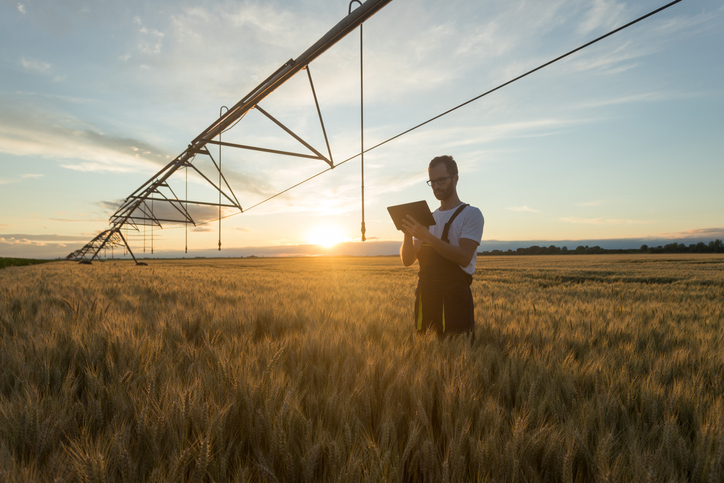Engineering with Nature – Designing a more resilient and sustainable future

Authored by AXA XL
The focus on nature-based design solutions has never been greater. On April 13, 2023, AXA XL Design Professional will present a live webinar, “Engineering with Nature for a More Resilient and Sustainable Future,” from 1 – 2:15 p.m. Eastern (Register here).
The webinar’s presenter will be Dr. Todd Bridges, recently retired Senior Research Scientist for Environmental Science for the U.S. Army Corps of Engineers and currently a faculty member of the University of Georgia’s College of Engineering. To get a preview of the webinar, Fast Fast Forward spoke to Dr. Bridges.
Fast Fast Forward: Please tell our readers about the upcoming webinar.
Todd Bridges: We’ll look at the opportunities and challenges that nature-based solutions present. As we endeavor to use these kinds of strategies to mitigate risk within our communities and lower risk from natural hazards, we have to overcome challenges, some of which relate to past practices.
Nature’s complex systems require different approaches, and design ingenuity must adapt to these systems. We’ll discuss various strategies as well as the four key elements of engineering with nature.
When did the Army Corps of Engineers begin to focus on nature-based solutions?
Our initiative, known as Engineering With Nature®, or EWN, began in 2010 and has been specifically funded by Congress since 2020. Since we began our work, the idea of nature-based solutions, or NBS, has really spread internationally. These projects have all the dimensionality of, for example, a wetland creation project that’s designed to store floodwater. That’s a nature-based solution. It’s applying science concepts to leverage and partner with nature to deliver socially meaningful outcomes.
Can you provide an example of what the EWN initiative has led to?
The Army Corps of Engineers dredges roughly 200 million cubic yards of sediment every year out of waterways to support our nationwide navigation program. Currently, the Corps makes beneficial use of about 35 to 40 percent of the sentiment it dredges each year, but it recently set a goal of beneficially using 70 percent of annual dredged sediment by 2030.
What are those beneficial uses?
The Corps uses the sediment to create wetlands along the shores that will not only provide habitats for wildlife and fish but also help stabilize the shoreline against erosion caused by waves, reducing risks of flooding. But the work achieves additional purposes such as creating habitats for wildlife, which in turn gives birdwatchers new places to enjoy their hobby.
How widespread is the practice of implementing nature-based solutions?
It’s quite common in some quarters, such as architecture and, increasingly, in civil engineering. As an example, landscape architects would say that this is what they do. The core of their discipline is combining the manmade and the natural.
If I were advising landscape architects, I would urge them to consider how to accentuate the engineering function of projects, such as combining an urban park with stormwater management. Our cities’ aging stormwater systems weren’t designed to handle 50 inches of rain in a week, as was the case in Houston during Hurricane Harvey.
Last winter I visited a 100-acre city park in Gilbert, Arizona. Two decades ago the city constructed seven ponds in the park that receive 100-percent wastewater from the city’s wastewater treatment facility. The purpose of those ponds is to infiltrate that water into the groundwater aquifer. By all indications, the project substantially raised Gilbert’s groundwater table. The park is beautiful and a great place for fun. That’s a way of combining a socially valuable project with one that has a very significant engineering function.
One of the key elements of the EWN initiative is using science-based collaboration among designers, stakeholders, and partners to produce broadly acceptable projects. Can you expand on that?
No single organization has the authority and the means to produce one of these multipurpose projects on its own. You have to collaborate to get alignment across stakeholders and achieve these kinds of outcomes.
Keep in mind that area residents will have to live with the completed project for years to come—in effect, the project belongs to them. Understanding their desires for the project as well as their concerns is central to a successful outcome. I see communities wanting more from infrastructure projects; they want nature-based elements incorporated into projects, elements that should align with the prevailing aesthetic.
What should design professionals do to make sure they can respond to the increasing pressure to create nature-based solutions?
They should ask themselves, “What are the standards that will guide us as we produce these projects in a responsible way?” and “How can we produce these projects in a credible way that’s based on evidence?” This is a case where design professionals can come together to share their experiences and contribute to the further development of those standards.
For example, in September 2021, the Army Corps of Engineers published a 1,000-page technical guide, International Guidelines on Natural and Nature-Based Features for Flood Risk Management. The guide is the product of our having convened a group of subject matter experts over the previous five years.
Creating nature-based project solutions certainly seems like an aspect of the design professions that’s here to stay.
This is a very exciting time because the desire for innovation is at a level beyond anything I’ve seen during my career. Those who attend or later view our webinar on April 13 will find out what’s behind that excitement and, as individual audience members, begin to understand their role within this area and how to find new opportunities.
Our webinar, “Engineering with Nature for a More Resilient and Sustainable Future,” will be presented live on April 13, 2023, from 1 – 2:15 p.m. Eastern. A recording of the webinar will later be posted to our learning management system, the EDGE.





